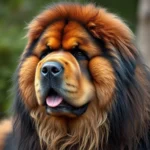
Introduction
Dog breeds are distinct varieties of domestic dogs, each with unique characteristics, traits, and histories. The significance of understanding these breeds lies in selecting the right companion for your lifestyle, ensuring a harmonious relationship between the dog and its owner. Each breed comes with its specific set of needs and behaviors, making it crucial for potential dog owners to conduct thorough research before making a commitment.
Among the myriad of dog breeds, the Bogle is a fascinating mixed breed that has gained popularity in recent years. The Bogle is a crossbreed between the Beagle and the Boston Terrier, inheriting traits from both parent breeds. This breed has captured the hearts of many dog lovers due to its charming appearance and playful demeanor. In this article, we will delve deeper into the unique characteristics, care requirements, and overall appeal of the Bogle.
Overview of the Bogle
Origin of the Bogle
The Bogle originated from the combination of two well-loved breeds: the Beagle and the Boston Terrier. The Beagle, known for its excellent sense of smell and hunting capabilities, has a long history dating back to ancient times, primarily utilized for tracking and hunting small game. The Boston Terrier, on the other hand, was developed in the late 19th century in the United States as a companion dog. By blending these two breeds, the Bogle has emerged as a delightful mix that embodies the best traits of both.
Physical Characteristics
-
Size and Weight: The Bogle typically stands between 12 to 16 inches tall and weighs around 15 to 30 pounds. This size makes them suitable for various living environments, including apartments and small homes.
-
Coat Type and Colors: The coat of a Bogle is usually short and smooth, requiring minimal grooming. Common colors include black, white, brown, and brindle patterns, often resembling a mix of its parent breeds.
-
Distinctive Features: Bogles often have floppy ears, a short snout, and expressive eyes that give them an endearing look. Their athletic build contributes to their playful demeanor.
Temperament and Personality Traits
The Bogle is renowned for its friendly and affectionate nature. Here are some essential personality traits:
-
General Disposition: Bogles are typically social and enjoy being around people. They are known for their playful and loving temperament, making them excellent family pets.
-
Compatibility with Families and Children: Thanks to their gentle nature, Bogles are great with children and can adapt well to family life. They thrive on companionship and enjoy participating in family activities.
-
Energy Levels and Exercise Needs: Bogles are energetic dogs requiring regular exercise to keep them mentally and physically stimulated. Daily walks, playtime, and interactive games are essential for their well-being.
Bogle Care and Maintenance
Dietary Needs
Feeding your Bogle a balanced diet is crucial for their health. Here are some dietary considerations:
-
Recommended Food Types: High-quality dog food, whether dry kibble or wet food, is essential. Look for options containing real meat as the first ingredient, combined with vegetables and whole grains.
-
Dietary Restrictions or Considerations: Some Bogles may develop food sensitivities, so it’s important to monitor their reactions to different foods. Consult with a veterinarian to tailor a diet that fits your dog’s specific needs.
Grooming
Maintaining a Bogle’s coat is relatively straightforward, but regular grooming is necessary:
-
Coat Care Routine: Brush your Bogle’s coat once a week to remove loose fur and minimize shedding.
-
Bathing Frequency: Bathe your Bogle every few months or as needed, especially if they get muddy or dirty.
-
Nail Trimming and Ear Cleaning: Regularly trim your dog’s nails to prevent overgrowth and discomfort. Check their ears weekly for dirt or wax buildup and clean them gently with a veterinarian-recommended solution.
Exercise Requirements
To keep your Bogle healthy and happy, ensure they receive adequate exercise:
-
Recommended Daily Exercise: Aim for at least 30 to 60 minutes of exercise every day, which can include walks, play sessions, or trips to the dog park.
-
Types of Activities Suitable for Bogles: Engage them in activities like fetch, agility training, and scent games to stimulate their minds and bodies.
Health Considerations
Common Health Issues
Like all breeds, Bogles may be prone to certain health issues. Some common health concerns include:
-
Hip Dysplasia: A genetic condition that affects the hip joint, leading to pain and mobility issues. Symptoms include limping or difficulty getting up.
-
Eye Issues: Conditions like cataracts and progressive retinal atrophy can affect Bogles, leading to vision problems. Regular veterinary check-ups can help detect these issues early.
-
Respiratory Problems: Due to their short snouts, Bogles may be susceptible to brachycephalic airway syndrome, causing breathing difficulties, especially in hot weather.
Preventive Care
To ensure a long, healthy life for your Bogle, prioritize preventive care:
-
Importance of Regular Vet Check-Ups: Schedule routine veterinary visits for vaccinations, health assessments, and dental care.
-
Vaccination Schedules: Ensure your Bogle is up to date on vaccinations as recommended by your veterinarian to prevent common diseases.
Lifespan
The average lifespan of a Bogle ranges from 10 to 15 years. Factors influencing their lifespan include genetics, diet, exercise, and overall health care.
Training and Socialization
Basic Training Techniques
Training your Bogle is essential for a well-behaved companion. Here are some effective methods:
-
Recommended Training Methods: Use positive reinforcement techniques, rewarding your Bogle with treats and praise for good behavior. This approach strengthens your bond and encourages learning.
-
Common Commands to Teach: Start with basic commands such as sit, stay, come, and down. Consistent training sessions will enhance their understanding and responsiveness.
Socialization Tips
Early socialization is crucial for a well-adjusted Bogle:
-
Importance of Early Socialization: Expose your Bogle to various people, environments, and other animals to help them develop confidence and reduce anxiety.
-
Activities to Encourage Social Interaction: Arrange playdates with other dogs, visit dog parks, or enroll in puppy classes to facilitate positive interactions.
Behavioral Issues
While Bogles are generally well-mannered, some behavioral issues may arise:
-
Common Behavioral Problems: Separation anxiety, barking, and digging are a few issues that may occur. Identifying the root cause and addressing it early can prevent escalation.
-
Solutions: Implement training strategies, provide mental stimulation through toys, and maintain a consistent routine to help mitigate these behaviors.
Living with a Bogle
Ideal Living Environment
Bogles are adaptable dogs but thrive in certain environments:
-
Best Types of Homes: They can do well in both apartments and houses, provided they receive adequate exercise and mental stimulation. A home with a yard can enhance their living experience.
-
Yard Space Considerations: A secure, fenced yard is ideal for safe outdoor play. However, daily walks and outings are still necessary for proper exercise.
Compatibility with Other Pets
Bogles generally display friendly behavior towards other pets:
- How Bogles Typically Interact with Other Dogs and Pets: Their sociable nature allows them to get along well with other dogs. Early socialization is key to ensuring positive interactions.
Family Dynamics
Bogles are known for their adaptability to various family structures:
- Suitability for Singles, Couples, and Families with Children: Their affectionate nature makes them a great fit for singles, couples, and families alike. They bond quickly with children and adults, making them an excellent addition to any household.
Popularity and Breeder Considerations
Current Popularity of Bogles
The Bogle has seen a rise in popularity, reflecting broader trends in dog ownership that favor mixed breeds. Many owners appreciate the hybrid vigor and unique characteristics these dogs offer.
Finding a Reputable Breeder
When considering a Bogle, it’s vital to find a responsible breeder:
-
Key Traits to Look for in a Responsible Breeder: Seek breeders who prioritize health testing for both parent breeds and provide a nurturing environment for their puppies. Ask for health clearances and visit the breeding facility to assess conditions.
-
Adoption vs. Purchasing from a Breeder: Consider adopting from shelters or rescue organizations. Many mixed breeds, including Bogles, are often available for adoption, providing a loving home for a deserving animal.
Cost of Ownership
Understanding the financial commitment of owning a Bogle is essential:
-
Initial Purchase/Adoption Fees: Costs can vary significantly, with adoption fees typically ranging from $50 to $300, while purchasing from a breeder may cost between $800 and $2,000.
-
Ongoing Costs: Consider expenses for food, grooming, veterinary care, and supplies. On average, anticipate spending $500 to $1,000 annually for general care.
Conclusion
In summary, the Bogle is a delightful mixed breed, known for its friendly nature, adaptability, and playful spirit. Understanding their care requirements, health considerations, and training needs is crucial for ensuring a happy and fulfilling life for your Bogle.
As you consider adding a dog to your family, reflect on your lifestyle and the unique qualities of a Bogle. This breed can bring joy, companionship, and endless love to your home. Whether you choose to adopt or seek a reputable breeder, welcoming a Bogle into your life is sure to be a rewarding experience.









